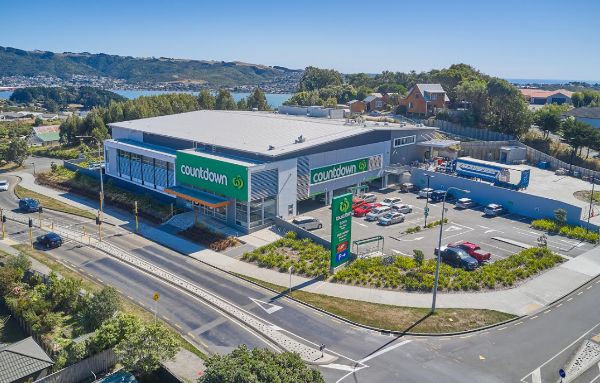Online shopping was well-entrenched in New Zealand pre-COVID but has grown exponentially as a result of the global pandemic.
When consumers’ usual face-to-face buying habits were stymied due to forced restrictions on their movements and social distancing protocols, Kiwis supercharged their already click happy ways.
Chris Beasleigh, Bayleys national director retail sales and leasing, says retail businesses had to swiftly assess their e-commerce capability in response to the rise in online demand.
“For many, it was a huge learning curve as they scrambled to ensure their online platform was stable and relevant, reviewed their distribution capabilities, tested their ability to fulfil orders and in some instances, basically started from scratch to get up and active online.
“The challenges were very real and many fell short. Some struggled because e-commerce was not yet a truly embedded part of their overall business model, others because their online platform was not robust enough to cope with a dramatic influx of traffic, and many faltered due to stock shortages caused by supply chain disruption.
“Then there were the added logistical challenges of compromised delivery networks, along with confusion and mixed-messaging around what constituted ‘essential items’.”

NZ Post’s e-Commerce Spotlight research into how COVID-19 impacted Kiwi online shopping activities, revealed that New Zealanders spent a total of $5.8 billion online in 2020, around $1.2 billion more than in 2019, with 305,000 new online shoppers.
Retail NZ chief executive Greg Harford estimates roughly half of New Zealand retailers had no online presence pre-COVID. That number is now down to a quarter and he reckons about 17 percent of retail sales by volume are now done through e-commerce channels.
A survey conducted by The Warehouse Group on the shopping habits of customers during the first COVID-19 lockdown found that 48 percent of respondents shopped online with The Warehouse Group for the first time in 2020. The company also reported an increase in click and collect sales of 103.2 percent in its 2020 financial year.
Matthew Grainger, Woolworths New Zealand’s acting general manager format, development and property, says e-commerce is a fast-growing part of its Countdown supermarket business, and now represents more than 10 percent of total sales.
The growth of ‘dark stores’ – dedicated fulfilment centres where there is no customer-facing service – is a global trend being embraced by Countdown. “Traditionally, all of our click and collect orders have been picked up from local Countdown supermarkets, but with the growth of the online channel we have recently developed dedicated Countdown e-stores in Auckland and Wellington, solely for servicing our online home delivery customers,” Grainger says.
He says Countdown is trialling a range of industry-leading technologies for picking and storing online orders. “The technology in this space is moving fast, and we are always trying new things such as e-lockers and automated storage units to make it even more convenient for our customers to pick up their online orders.
“Customers receive a text message with a pin code to collect their order, and their ambient, chilled and frozen products are stored in different compartments to ensure that their ice cream is frozen, and their vegetables are crisp and fresh.
“However, while e-stores are playing an increasingly important role, particularly in the larger metropolitan areas, there will always be a need for well-designed physical supermarkets in convenient locations throughout New Zealand.”
Chris Beasleigh says retailers are continuing to suss out the optimal balance between serving customers physically instore and digitally.
In assisting retail clients through COVID-19 challenges, he says Bayleys specialist retail teams are well-attuned to meshing requirements for physical space with the need to have sound omnichannel models.
“Flexibility is essential given new retail behaviours by consumers, higher expectations around fulfilment and delivery times and the need for in-person shopping to be safe and convenient,” he says. “There is definitely scope for significant growth in the retail sector, but it will require smart thinking, intelligent planning and an ability to pivot when external market forces change.”



 Business Canterbury: Urges Council To Cut Costs, Not Ambition For City
Business Canterbury: Urges Council To Cut Costs, Not Ambition For City Wellington Airport: On Track For Net Zero Emissions By 2028
Wellington Airport: On Track For Net Zero Emissions By 2028 Landcare Research: ANZAC Gall Fly Release Promises Natural Solution To Weed Threat
Landcare Research: ANZAC Gall Fly Release Promises Natural Solution To Weed Threat NZ Anti-Vivisection Society: Auckland Rat Lovers Unite!
NZ Anti-Vivisection Society: Auckland Rat Lovers Unite! University of Canterbury: $1.35 Million Grant To Study Lion-like Jumping Spiders
University of Canterbury: $1.35 Million Grant To Study Lion-like Jumping Spiders Federated Farmers: Government Ends War On Farming
Federated Farmers: Government Ends War On Farming



